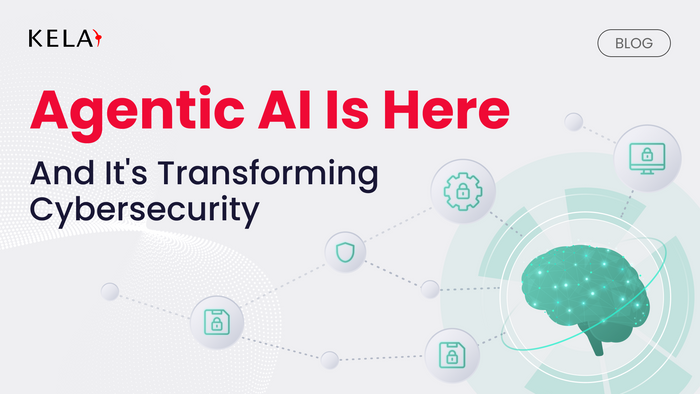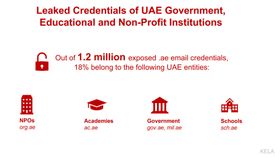How Agentic AI is Transforming Cybersecurity
Updated April 15, 2025.

The era of intelligent, AI-powered digital teammates is no longer on the horizon, it’s here.
In March, Gartner made a bold prediction: by 2029, agentic AI will autonomously resolve 80% of common customer service issues without human intervention, leading to a 30% reduction in operational costs. Imagine the possibilities for business productivity! While Gartner’s focus was specifically on customer service, the implications of agentic AI for fast resolutions reach far deeper, especially in cybersecurity.
Security Teams Under Pressure: A New Era Demands a New Approach
Today’s Security Operations Center (SOC) teams are under immense strain. Faced with growing attack surfaces, constant alert fatigue, and rising complexity, even the most capable teams struggle to keep pace. According to the 2024 SANS report, 47% of respondents cited a lack of automation, shortage of skilled personnel, and high staffing demands as the top barriers to effective threat detection and response.
This is exactly where agentic AI can be a game changer. These intelligent agents don’t just automate repetitive tasks—they actively analyze, triage, and investigate threats, functioning as digital teammates who work around the clock. By embedding agentic AI into the analyst team, organizations can scale analyst capacity, reduce manual triage, and empower teams to focus on the strategic work that truly matters.
What once required an army of analysts can now be accelerated and streamlined—without expanding headcount.
Cybersecurity's Agentic AI Boom
The cybersecurity market is embracing the potential of agentic AI. The global agentic AI in cybersecurity market is projected to grow at a staggering CAGR of 39.7%, reaching $173.5 million by 2034. In the United States alone, the broader agentic AI tools market is valued at $1.74 billion in 2024, growing at 51.6% CAGR.
This transformation is extending across the cybersecurity landscape spanning tools and solutions:
Microsoft recently introduced 11 AI agents into its Security Copilot platform, designed to autonomously triage phishing alerts and assess vulnerabilities.
Trend Micro recently unveiled its "AI brain," an autonomous cybersecurity agent designed to automate threat defenses. This AI agent is capable of predicting attacks, evaluating risks, and acting autonomously to mitigate threats.
Vastav AI, launched in India, is setting a precedent for real-time deepfake detection, another signal of the growing trust in agentic automation for security and authenticity.
Agentic AI Meets Threat Intelligence
At KELA, we’ve seen firsthand how the challenges of alert fatigue, talent shortages, and the increase of threat actors leveraging dark AI tools, are stretching security operations, intelligence and investigation teams to their limits. That’s why we recently launched Digital Cyber Analysts, the industry’s first agentic AI purpose-built for threat intelligence.
KELA’s Digital Cyber Analysts leverage KELA’s cybercrime intelligence data lake to provide a comprehensive view of cyber threats:
Hacking Discussions – Provides actionable insights on cybercriminal activities, malicious tools, data breaches, stolen goods and services, etc.
Technical Intelligence – Monitors and blocks Indicators of Compromise (IOCs) such as IPs, hashes, and domains.
Threat Actor Profiling – Conducts threat actors’ profiles, including tactics, techniques, and procedures (TTPs).
Leaked Credentials – Detects compromised credentials linked to your organization.
Daily Threat Highlights – Provides key intelligence updates and mitigation measures regarding recent cyber threats.
Phishing & Brand Abuse – Detects, blocks, and takes down phishing and brand abuse.
From Hours of Work to Instant Action: Meet Alex
Until now, addressing exposed credentials required analysts to jump across multiple systems—starting from a threat intelligence alert, verifying the user in the IdP, requesting a password reset, and coordinating with server teams to terminate sessions. It often meant toggling between the TI platform, SIEM, IdP, and endpoint tools—unless you had the budget and capacity to fully integrate everything (which few do).
Now imagine starting your day with this update from your AI analyst, Alex:
“Credentials linked to your VPN were found in infostealer logs. They belong to an active employee. I’ve forced a password reset and terminated all sessions to eliminate MFA bypass.”
That’s not a roadmap item. That’s happening now—with no need for costly custom integrations or manual triage.
From Investigation Bottlenecks to Real-Time Attribution: Meet Ethan
Unmasking threat actors used to be a painstaking task, reserved for vendors with elite threat intel teams and deep access to the cybercrime underground. Law enforcement and even advanced enterprises had to rely on external reports or partner briefings.
Now, with Ethan, that capability is built in.
Imagine trying to attribute a threat actor using fragmented clues spread across forums, encrypted chats, and stolen data dumps—some going back years. Nearly impossible with traditional tools. But with Ethan, digital traces are connected, contextualized, and attributed—autonomously. Complex investigations that once took days or weeks are now executed in minutes, enabling proactive disruption and attribution at scale.
From Passive Alerts to Active Defense—Without Burnout
Our new AI-powered analysts—Alex for enterprises and Ethan for law enforcement—go beyond passive automation. They think, act, decide, prioritize, and communicate like human team members. From generating daily threat briefs and flagging leaked credentials to responding to RFIs in seconds, our Digital Cyber Analysts are transforming how security teams work.
They’re also continuously learning—refining their knowledge based on evolving threats, platform usage, and feedback to become sharper and more accurate with every interaction.
From Intelligence to Impact—Machine Speed, Human Context
As Gartner noted, agentic AI enables “autonomous and low-effort” customer experiences that create better outcomes with fewer human resources. That’s especially critical in cyber defense, where urgency, precision, and context can be the difference between mitigation and disaster.
Our Digital Cyber Analysts aren’t just assistants, they’re force multipliers. They don’t just find data, they understand it. And they don’t just alert, they act. Around the clock and without burnout.
Learn more about Alex, Ethan, and the power of agentic threat intelligence here or request a demo to see them in action.





